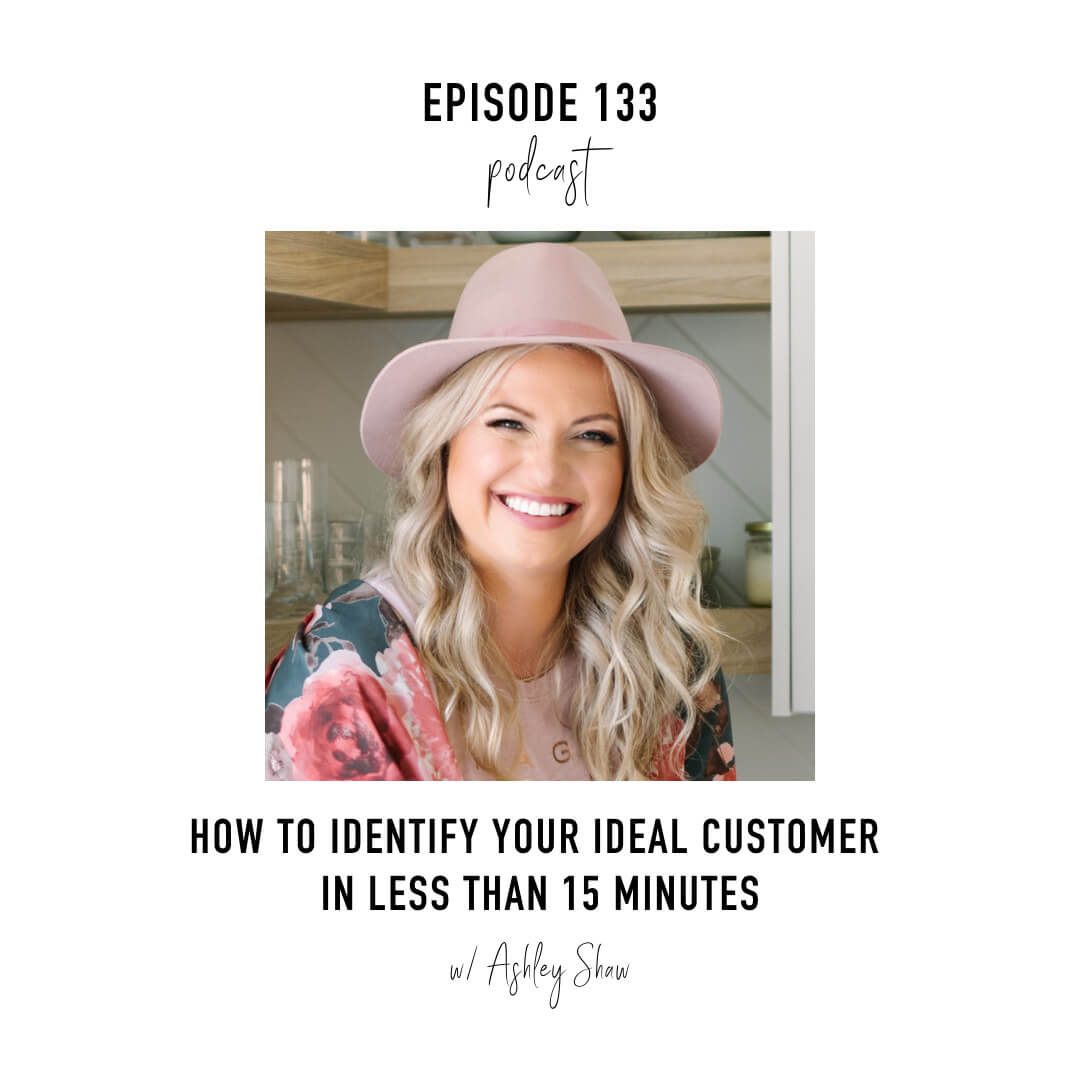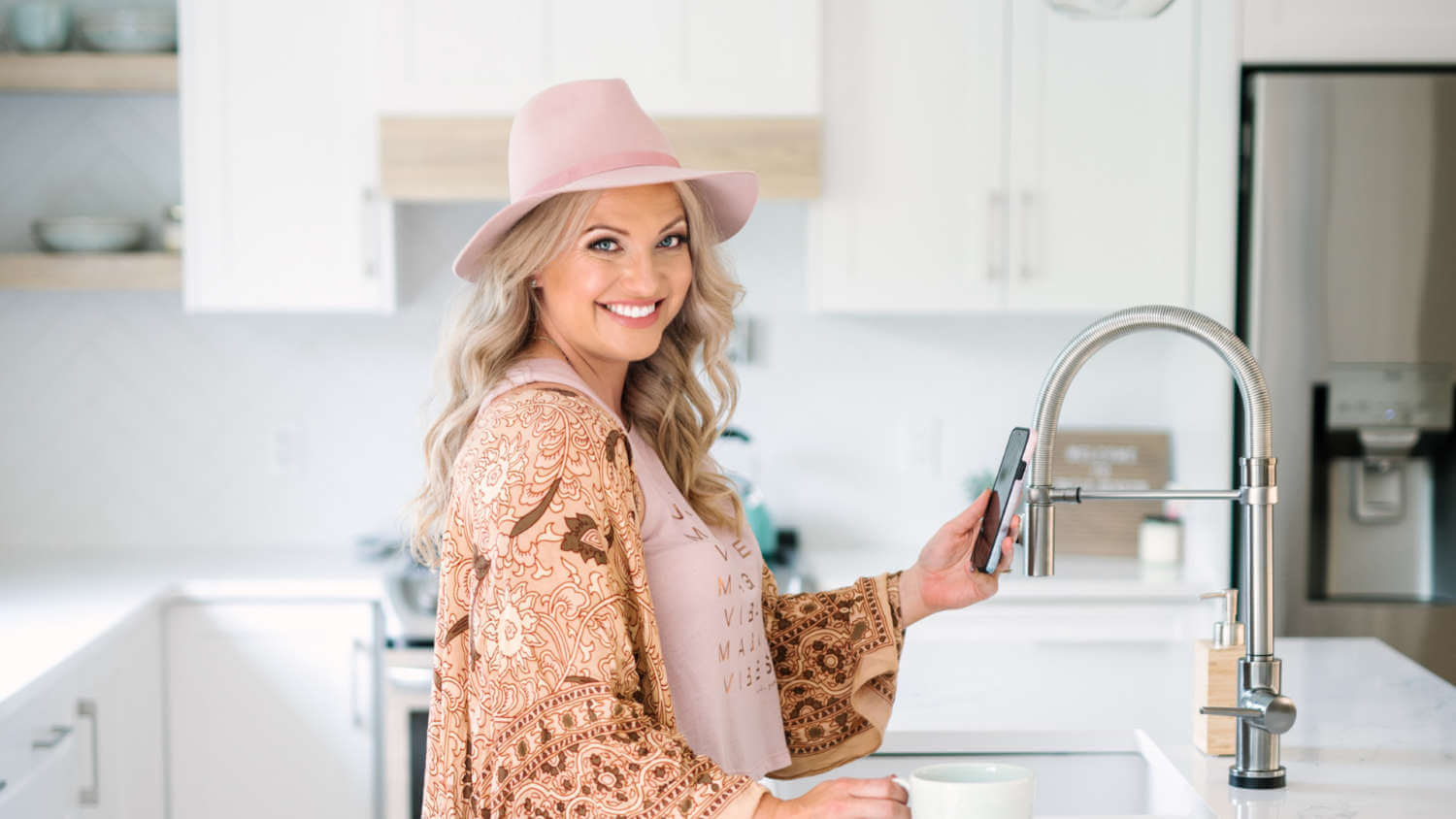How to Identify Your Ideal Customer in Less than 15 Minutes
Manage episode 389734196 series 3538248

The importance of narrowing down my ideal client wasn’t made obvious when I first started out in business. It wasn’t until I took courses and started learning more that I understood how key this truly is. When it comes to setting your strategy, you need to be talking to your ideal customers before they’re ready to buy, so you really know where they are in their journey. Who are they? What are they consuming? What keeps them up at night? It’s important to understand all of this so you can frame what you’re saying in the way that is relatable to them. That’s why identifying your ideal client is a crucial step when you’re first starting out, or even when you’re a few years into your business and just trying to get clearer.The other thing to keep in mind is that your ideal client might change. Who I thought I was going to help when I first started is much different than who I help now! Recently, I had a chat with a good friend of mine and we got into a discussion about how you DO want to niche down in the beginning, but as you get more customers, there actually comes a point where you can open up that niche a little bit… which is exactly how my business started, and how it’s working now. I started by helping Beachbody coaches, but over the last 5 years it’s become apparent that other people needed my help outside the workout industry. A lot of people now come to me from other industries like nutrition, skincare products, beauty, wellness, etc… and while everything is still anchored in health and wellness, I’ve had to get very specific from the beginning in order to get my bearings. Now that I REALLY understand my market, I’ve been able to expand! There’s a point where it actually can get saturated, or where you’ve pretty much helped as many people as you can… and there’s an opportunity to expand in the future. In the beginning however, you definitely want to be honed in on who you are helping so you can speak directly to them. THEN, at that point there will be a time and place where you can open up that market.
When it comes to identifying who your ideal client is, there are 2 ways I would go about it:
1. Think about that person you really want to help
When you’re first starting, this can feel like a bit of a guess. Especially if you haven’t had any customers before! For example, you can think “ok, I want to help women age 30-65, who’ve had children at some point and want to get back into feeling themselves again…” And overall, have a general idea of who you want to help. That’s a good starting point, but you are going to make edits to it over time. Once you have that person, it’s a lot easier if you’ve had some customers before and you know who you LIKE helping. What you DON’T want to do is try to start helping people who AREN’T your people. This happened to me in the beginning- I would sign myself up to help people on coaching calls, and sometimes I’d have no-shows for 3 or 4 times… so I decided these are obviously not my people, and not where I want to be investing my time. I went back to the drawing board and decided who I REALLY wanted to help, what I really like about certain people, and what turns me off that I don’t have time for. Once you have this idea in your mind, it puts brackets around the demographic/group you’re going after but once you have more encounters, you might come across people who don’t take action. Obviously you don’t want to focus on those people, so it’s about focusing more on your market and deciding who you really want to go after. Those trips and falls are very important in learning who you want to work with and who you don’t want to work with.
2. When you identify them, get on some calls with them to deeply understand their problems, and how you can help them.
You need to have a deep understanding of who they are. Once you have a handful of customers you’ve worked with or have an email list, you can do surveys to understand their challenges, what’s holding them back, what they’ve spent on this before! There are great questions I’ve found to help me reach a new level of understanding so I’m not guessing at what they need next. The next step would be calling out that audience. Once you’re posting on your feed, you’ll be able to check your posts’ performance stats and notice that there’s an 80-20 rule. Of all of your posts, 20% of them are getting 80% of the likes! So what are those posts? That should play into who your ideal customer is and what messaging they need to hear. We did a test like this about 4 months ago. I’d written a new book called F*ck what Your Upline Said, and we actually had a different title for it in the beginning. We were playing around with some ideas and posting about it on social media, but it wasn’t until we started to see what people were responding to that we realized there was a lot of frustration from coaches, reps and distributors out there about what they’re being told by their upline vs. what is actually working. A lot of people’s uplines haven’t built a business like this in 8-10 years, so it’s very frustrating to hear advice and not see it come through after doing exactly what you were told to do. It became very obvious this was a very important topic to our audience, and it was content they wanted to learn more about. We asked ourselves: What are some myths they’ve been told, and what can they do instead?This phase is all about being curious, and being ok with having different angles and things you’re testing and trying. Different styles of reels, genres, etc… Color outside the lines in the testing phase, because it’ll tell you who the passionate people are! It’s not just about finding your ideal customer and client. You really want to find people who are ready to take action in a market that’s growing, where people are spending money.
I once heard a story where an entrepreneur was trying to pick a market, and he ended up picking Resume Writing. Well, when you really think about that market, they’re all people who are looking for jobs and usually don’t have a ton of money! It’s actually not a great market to be focused on growing a business in. These are important questions to be asking yourself when you’re picking a market! Is it growing? Do they have money? For example, if you’re just focusing on a certain demographic like 18-21 year olds, many of those people might be going to school and not have money for what you’re offering. Those are some of the key things I have found REALLY helpful after going through this process many many times. They’re what I wish someone could have sat down and taught me to do, because you spend a LOT of time and effort on the content creation. Images… hashtags… captions… the truth is, if you haven’t clearly identified your ideal client and who you’re talking to, you won’t slow their scroll or influence any behavior or decisions. While you’re posting, think about looking the person in the eyes sitting across the table from you. It’s not only about identifying them, but really getting in their shoes and thinking about what’s going on in their minds in order for them to make a decision.Now the 80-20 rule is still in play! 20% of your customers are bringing in 80% of your revenue. Who are those people that don’t say no? The ones that just make a decision and move on with it? Those are your ideal people. As I’ve gotten into this business further, a lot of the people we end up helping on the higher level (such as in masterminds and strategy sessions) all tend to be people who have partners in industries like oil and gas, or have executive-level jobs. It was a pattern that occurred to us after working with a number of people! It was helpful to recognize and understand our ideal customers just a little further. If you’re just starting out and don’t have a lot of clients, don’t worry- you can still have these conversations with potential customers, and keep posting things and seeing whats getting the most engagement. Unfortunately, a lot of entrepreneurs don’t have this buttoned down tight. If you’re just starting out and you’ve got a bit of an idea, you’re already ahead of a lot of others! It impacts SO much of your business and strategy, so it’s a very important step in framing out what you should be posting, so you’re not wasting countless hours posting things that don’t make a difference.
Key Takeaways From This Episode:

- Your ideal people are the ones that are quick to make a decision and move forward.
- Working with people who don’t take action can actually be helpful in learning who you don’t want to work with.
- Eventually there’s an opportunity to expand- but only after you’ve truly narrowed down your ideal client and fully saturated that market.
RESOURCES MENTIONED:
My book, F*ck What Your Upline Said
WHERE WE CAN CONNECT:
- www.ashleyshaw.ca
- Ashley Shaw – The Fitness Leader Institute
- @theashleyshaw
- Join the Facebook Group: Business Bootcamp for Fitness Coaches
Don’t forget….. If you loved this episode, screenshot it and share it to your IG stories and tag me @theashleyshaw. I would love to connect with you!
100 episod





